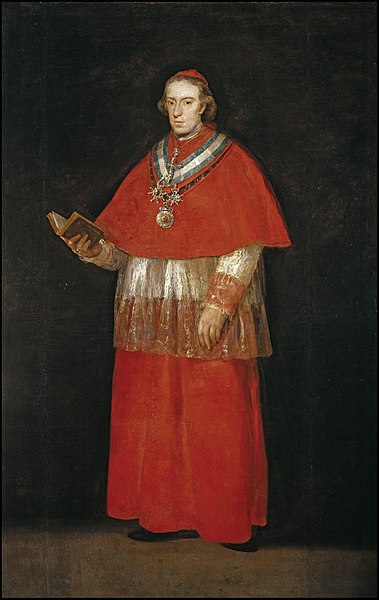The Trienio Liberal or Three Liberal Years was a period of three years in the modern history of Spain between 1820 and 1823, when a liberal government ruled Spain after a military uprising in January 1820 by the lieutenant-colonel Rafael de Riego against the absolutist rule of Ferdinand VII.
1820 print depicting the Cortes Generales.
Rafael del Riego (1784–1823), the leader of the Cortes Generales, which sought to restore the 1812 constitution.
Ferdinand VII of Spain, who abolished the Spanish Constitution of 1812 in 1814. Portrait by Francisco Goya, 1814.
Luis María de Borbón y Vallabriga, 14th Count of Chinchón (1777–1823), Archbishop of Toledo and Primate of Spain, a liberal churchman who abolished the Spanish Inquisition in 1820. (It would be re-established in 1823.)
History of Spain (1808–1874)
Spain in the 19th century was a country in turmoil. Occupied by Napoleon from 1808 to 1814, a massively destructive "liberation war" ensued. Following the Spanish Constitution of 1812, Spain was divided between the 1812 constitution's liberal principles and the absolutism personified by the rule of Ferdinand VII, who repealed the 1812 Constitution for the first time in 1814, only to be forced to swear over the constitution again in 1820 after a liberal pronunciamiento, giving way to the brief Trienio Liberal (1820–1823).
The first Spanish Constitution was established by the Cortes of Cádiz
King Ferdinand VII of Spain (r. 1808, 1814–1833)
The cortes of the Trienio Liberal (1820–1823), a period of liberal rule in Spain
The execution of Torrijos, by Antonio Gisbert Pérez. Ferdinand VII, after his restoration as absolute monarch in 1823, took repressive measures against the liberal forces in his country.







